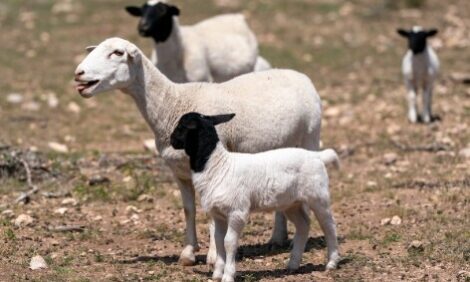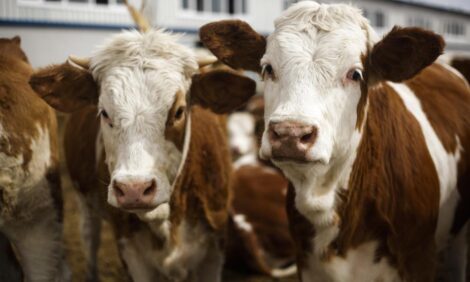



Preventing diarrhea in dairy calves
Preventative feeding of colostrum to calves postnatal reduced the odds of diarrheaEditor's note: The following article contains excerpts of a presentation by Melissa Cantor, PhD, Department of Animal Science, Penn State University, during the 2024 Tri-State Dairy Conference.
For many decades, colostrum was only perceived as having value to the calf during the first 24 hours postnatal. However, there is increasing evidence that a calf can benefit from the immune-supportive properties of colostrum beyond the 24-hour phase postnatal.
This emerging field of research where the feeding of a supplement has immune-supportive properties is known as nutraceutical feeding. Specifically, colostrum-focused nutraceutical research is emerging in postnatal calf nutrition studies with the focus of:
- preventative feeding strategies that add colostrum to the milk diet to reduce disease likelihood and improve calf average daily gain (ADG)
- intervention of supplemental colostrum feeding (CR) as a nutraceutical to calf groups that are already sick or at risk for disease
Diseases in dairy calves
Farmers need to manage diarrhea and bovine respiratory disease, since those are the leading killers of replacement heifers (Urie et al., 2018). Diarrhea is characterized by a loose fecal consistency which can cause rapid dehydration of the calf and an imbalanced microbial community. This can result in poor nutrient absorption in the small intestine (as reviewed by Cho and Yoon, 2014).
For example, with severe cases of pathogenic diarrhea where hospitalized calves were markedly dehydrated, calves exhibited acid-base imbalances in the blood, which is a risk factor for mortality (Trefz et al., 2017).
Furthermore, 75% of diarrheic calves were treated with antimicrobials according to a large nation-wide survey (Urie et al., 2018). However, most pathogens associated with diarrhea were viral or protozoan in surplus calves (Renaud et al., 2020). Thus, there is room for improvement in the judicious use of antimicrobials in dairy calf-rearing systems, especially to treat cases of diarrhea.
Preventative feeding of colostrum
Electrolyte therapy is a common intervention strategy for diarrheic calves because it restores acid-base imbalances in the blood and metabolically improves a calf’s pH blood status. While electrolytes are beneficial for diarrheic calves, this type of intervention is not associated with improved growth performance or long-term positive health effects (Wood et al., 2021).
Thus, several nutraceuticals with bioactive properties have been explored to improve calf responses to diarrhea, such as lysolecithin (Reis et al., 2021), lactoferrin (Pempek et al., 2019), oligosaccharides (Reis et al., 2022), and reconstituted bovine colostrum powder (Chamorro et al., 2017; Kargar et al., 2020; McCarthy et al., 2023).
Most studies that investigate nutraceuticals to improve calf diarrhea use constituents that are naturally found in bovine colostrum, such as lactoferrin, oligosaccharides, and dried bovine colostrum (reviewed by Carter et al., 2021).
Two different researchers observed that a 14-day preventative feeding treatment of 0.35 kg/day to calves postnatal was associated with reduced odds of diarrhea but did not improve preweaning performance (Charmorro et al., 2017; Kargar et al., 2020). Kargar followed the colostrum supplemented calves post-weaning and observed beneficial growth performance compared to controls.
A more recent study by McCarthy et al. (2023) observed that 14-day preventative feeding lowered the risk of mortality in calves supplemented a low dose of colostrum at 0.05 kg/d compared to calves offered a higher dose for two days (0.35 kg/d to mimic transition milk dosage of IgG), or a negative control.
McCarthy et al. (2023) observed no overall effect of treatment on growth performance up to 7 weeks of age, and both colostrum doses lowered the odds of diarrhea.
Colostrum supplementation has beneficial effects on diarrhea likelihood, but results are mixed on whether it can improve growth performance in calves.
Diarrhea onset therapy
One opportunity explored is feeding calves at diarrhea onset. Carter et al. (2021) mimicked transition milk feeding by feeding colostrum for 0, 2, or 4 days at a rate of 0.13 kg/day to surplus, limit-fed calves. Researchers from this study observed that limit-fed calves (<0.65 kg/day ADG) had reduced diarrhea severity and the 4-day colostrum feeding improved average daily gain responses compared to controls.
Another study by Cantor et al., (2021) evaluated the potential of using sickness behavior, such as changes in deviations from milk intake and drinking speed patterns from a robotic milk feeder as an early intervention strategy for high fed calves (>1.0 kg/day ADG).
For younger calves at-risk for diarrhea, feeding colostrum at 0.13 kg/day for 3 days at onset ameliorated diarrhea severity.
Conclusions
Preventative feeding of colostrum to calves for 14 days postnatal at a rate of at least 0.35 kg/day reduced the odds of diarrhea compared to controls in multiple studies, and in one study, improved the probability of survival.
In high disease-pressure herds, feeding colostrum at 0.35 kg/day has the most benefits to calves.
The intervention feeding of colostrum to calves at a rate of 0.15 kg/day for 4 days at diarrhea onset decreased diarrhea severity and improved ADG compared to control calves.
Calves benefit both from preventative feeding of colostrum and intervention colostrum feedings, but the mechanisms behind why calves receiving colostrum are more disease-resilient have not been researched.



